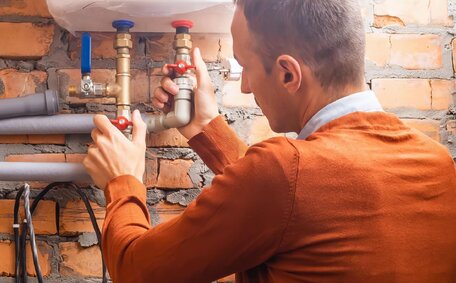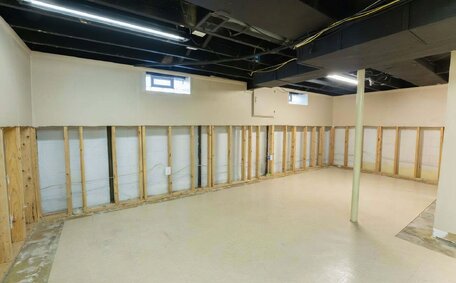Introduction to Troubleshooting Cold Water Issues
Regular maintenance forestalls the unwelcome surprise of cold showers, usually necessitating straightforward fixes. The guide also provides maintenance tips to prevent future issues.
To pinpoint the issue, one must work through a troubleshooting checklist methodically, then identify the source of the breakdown. This guide will offer homeowners a clear procedure for diagnosing cold water issues in gas electric water heaters.
Although some issues require professional intervention, many can be addressed independently with a structured approach. Safety remains paramount so we’ll discuss dangers of scalds and using caution around gas appliances.
A thorough understanding of your system’s anatomy is crucial for optimal functioning.
Either way, you’ll be far more equipped to ensure your water stays hot in your home.
Our aim is to empower you with troubleshooting knowledge while recognizing when to seek professional help. As local specialists in hot water systems for over 30 years, Ashfield Plumbing brings extensive hands-on expertise across all major brands.
Assessing the Problem - Why Did My Hot Water Stop Working?
Several common culprits may cause your hot water system to cease delivering warmth.
Initially, confirm the connection of the power supply or gas supply.
inspect the thermostat and heating elements. If the thermostat setting is too low or has malfunctioned, the unit won’t ignite or maintain operating temperature. Faulty heating elements are another possibility; they eventually corrode and fail over time.
On both gas and electric models, sediment accumulation, a tripped pressure relief valve or a leaky cold water inlet valve can also obstruct heating capability. Taking the time to methodically assess components can often pinpoint what requires fixing.
Checking Key Components in Electric Water Heaters
If you have an electric water heater that is not heating properly, there are a few key components to check:
- Check the fuse or circuit breaker that supplies power to the water heater. Reset or replace the fuse if needed.
- Inspect the upper and lower heating elements. Look for signs of corrosion, mineral deposits, or burn marks. Replace any damaged elements.
- Verify the thermostat is set properly to at least 120°F. Adjust as needed. Test to confirm it’s accurately controlling water temperature.
- Remove and inspect the temperature and pressure relief valve. Ensure it is draining properly and not leaking.
- Check for sediment buildup by draining about 4-8 litres of water from the tank’s drain valve. If a heavy outpour of sediment occurs, a total flush of the storage tank is necessary.
- Examine the outer shell for corrosion and leaks, especially near cold water inlet and hot water outlet pipes.
This checklist systematically helps identify potential problem areas. Some fixes involve simple adjustments while others require replacing hardware. In the interest of safety, always first turn off the power and give components time to cool off before you handle them.
Inspecting Gas Water Heater Systems
When troubleshooting a gas water heater that is not producing hot water, carefully inspect these key components:
- Verify the gas supply line does not have any leaks and that supply valve is turned on.
- Check that the pilot light is lit. Relight it if needed following the manufacturer’s instructions.
- Examine the thermocouple and replace it if corroded. This sensor halts gas flow if the pilot light extinguishes.
- Inspect the gas control valve and thermostat. Adjust temperature setting higher if too low.
- Test for flue blockage by ensuring combustion gases properly vent outside.
- Measure gas line pressure to verify it falls within acceptable range.
- Drain any sediment from the tank that could obstruct heating elements.
- Check for leaks on the water heater itself or connected pipes.
Always exercise extreme caution when dealing with gas appliances yourself. If you smell gas or are uncertain on next steps, contact a licenced plumber immediately. This gas water heater checklist allows for methodical inspection of components to diagnose and rectify malfunctions.
Identifying Other Common Reasons for Loss of Hot Water
Beyond the core components checked on electric and gas systems, several other issues could be obstructing hot water delivery:
- Low water pressure - If inlet pressure drops below 20 PSI, there might not be enough fill for the elements to heat water efficiently. Confirm your water supply pressure sits comfortably in the ideal 40-80 PSI range.
- Worn out anode rod - This protective rod corrodes over time to preserve the tank. Regular inspections every two to three years should be conducted for timely replacements and to protect the tank’s integrity.
- Sediment buildup - Heavy accumulations of mineral deposits and scale eventually cause overheating failures. Regular draining and anode rod checks enable monitoring buildup.
- Defective temperature & pressure relief valve - If this safety release valve fails to open when pressure exceeds safe limits, the electric or gas heating elements will keep overheating with continual operation past typical shutoff points.
A systematic checklist that includes examining power, gas, heating elements, thermostats, and pressure relief systems helps in identifying issues that impede hot water delivery. Although professional intervention may be needed for certain issues, identifying the underlying causes offers clarity for resolving hot water inconsistencies.
When Should I Call a Professional Plumber?
There comes a point in troubleshooting cold water issues when it’s prudent to call a professional plumber for support. If your diligent efforts with the checklists don’t restore hot water, seeking expert assistance is an efficient way to address the issue.
An experienced plumber uses specialised tools and expertise to inspect complex components and pinpoint failures. They can also advise whether repairs or full replacements are most cost-effective. Technicians regularly update their skills to stay abreast of the newest brands, models, and repair methodologies.
We recommend contacting Ashfield Plumbing if you experience any of the following:
- No hot water after checking power, gas, heating elements, thermostats and pressure relief systems
- Visible leakage from the hot water tank or connected pipes
- Heavy sediment buildup requiring a full system flush
- Corroded or damaged internal components like heating elements or anode rods
- Incorrect thermostat operation or temperature regulation failures
- Inability to relight the pilot light on a gas system after multiple attempts
With over 30 years of expertise, Ashfield Plumbing’s licenced technicians can accurately assess issues and recommend cost-effective solutions tailored to your specific needs. Reach out by email, phone or online booking to schedule an appointment.
Preventative Maintenance and Safety Tips
Regular maintenance is crucial for preventing issues with your hot water system. Simple maintenance tasks can significantly extend the lifespan of water heaters and prevent malfunctions:
- To keep sediment at bay, drain about 4-8 litres from the tank every three months, with a full system cleanse if excessive sediment is evident.
- Insulate pipes leading to your hot tap to enhance efficiency and minimise heat dissipation.
- Ensure your pipe fittings and joints are leak-free to avert potential water damage.
Safety should always be paramount when performing water heater maintenance:
- Keep your thermostat below 54°C to reduce the risk of scalds.
- Set your water temperature to a minimum of 60°C to eliminate Legionella bacteria and prevent Legionnaires’ disease.
- Always flick the supply switch off for power and gas and let systems cool down completely prior to performing any maintenance.
Staying proactive through routine inspections, flushings and component replacements reduces the likelihood of unexpected cold water situations. However, should issues arise, this guide provides comprehensive checklists for efficient hot water restoration in your home.
First Aid for Hot Water Burns and Scalds
Even with the best prevention measures, accidental hot water burns can occur. Familiarity with first aid procedures is critical in reducing the severity of injuries and aiding recovery from hot water scalds.
If skin is exposed to hot water, quickly get the person away from the water source and remove any soaked clothing. Cool the affected area for 10-15 minutes using cool water or a cold, damp cloth. Avoid using ice as this can damage skin tissue.
Cover the area loosely with a sterile non-stick bandage or clean cloth. Do not break any blisters that form and refrain from applying creams or ointments which can trap heat. Over-the-counter burn creams can help soothe pain after the burn has cooled.
Seek emergency care if the person experiences shock, has burns covering more than 10% of their body, or if the injury is on sensitive areas like hands, feet, face, groyne or buttocks. Signs of infection like increasing redness, swelling, pus or fever also warrant medical evaluation.
Young children and elderly individuals are at highest risk for serious scalds. Make sure your hot water heater is set below 54°C and that anti-scald tempering valves are installed on fixtures for vulnerable individuals. Teach children to test water temperatures carefully with the hot tap before making contact.
Knowing these first aid guidelines ensures you can provide proper care in the event of burns. Preventive measures include monitoring temperature, installing anti-scald devices, and protecting vulnerable residents.






